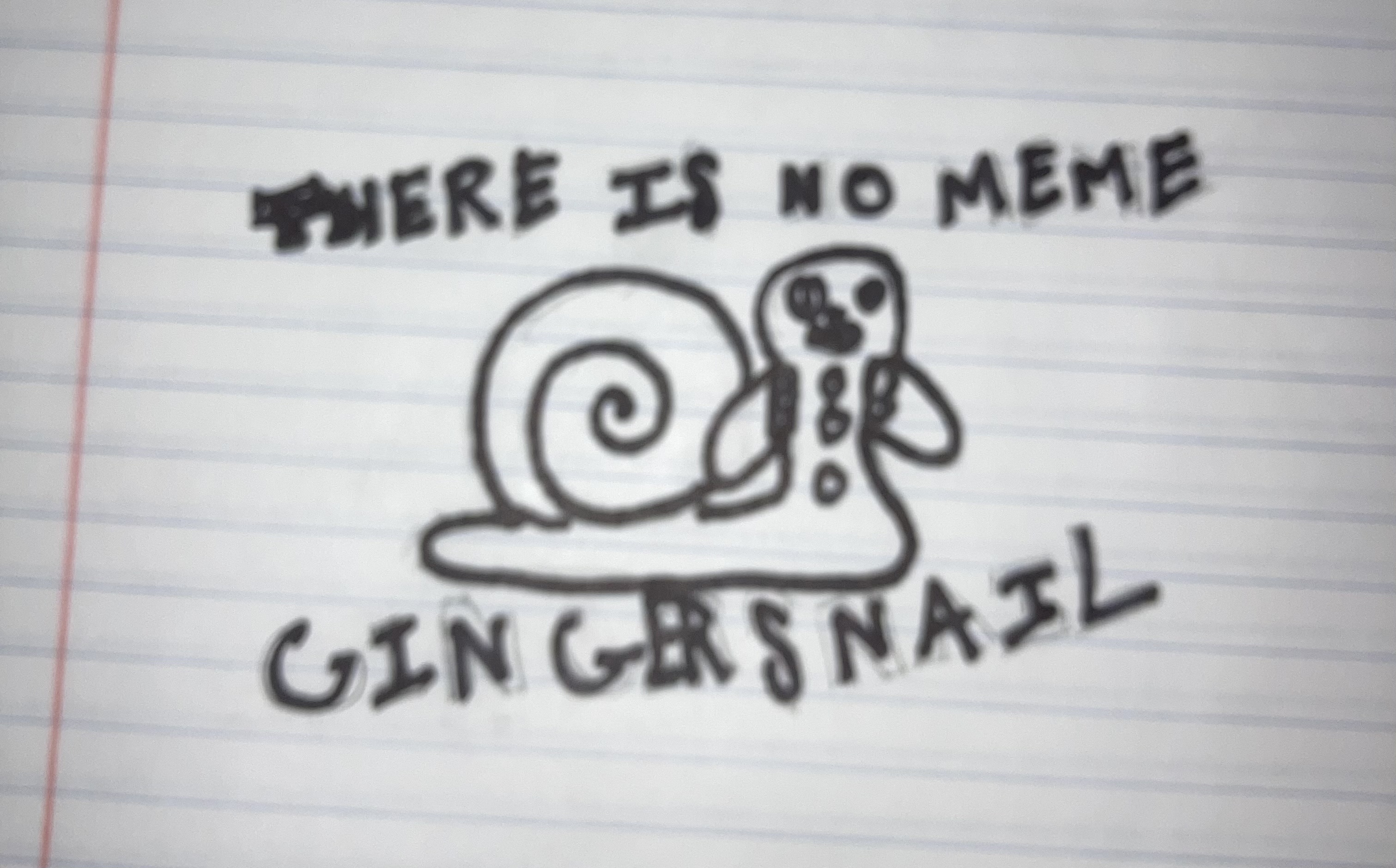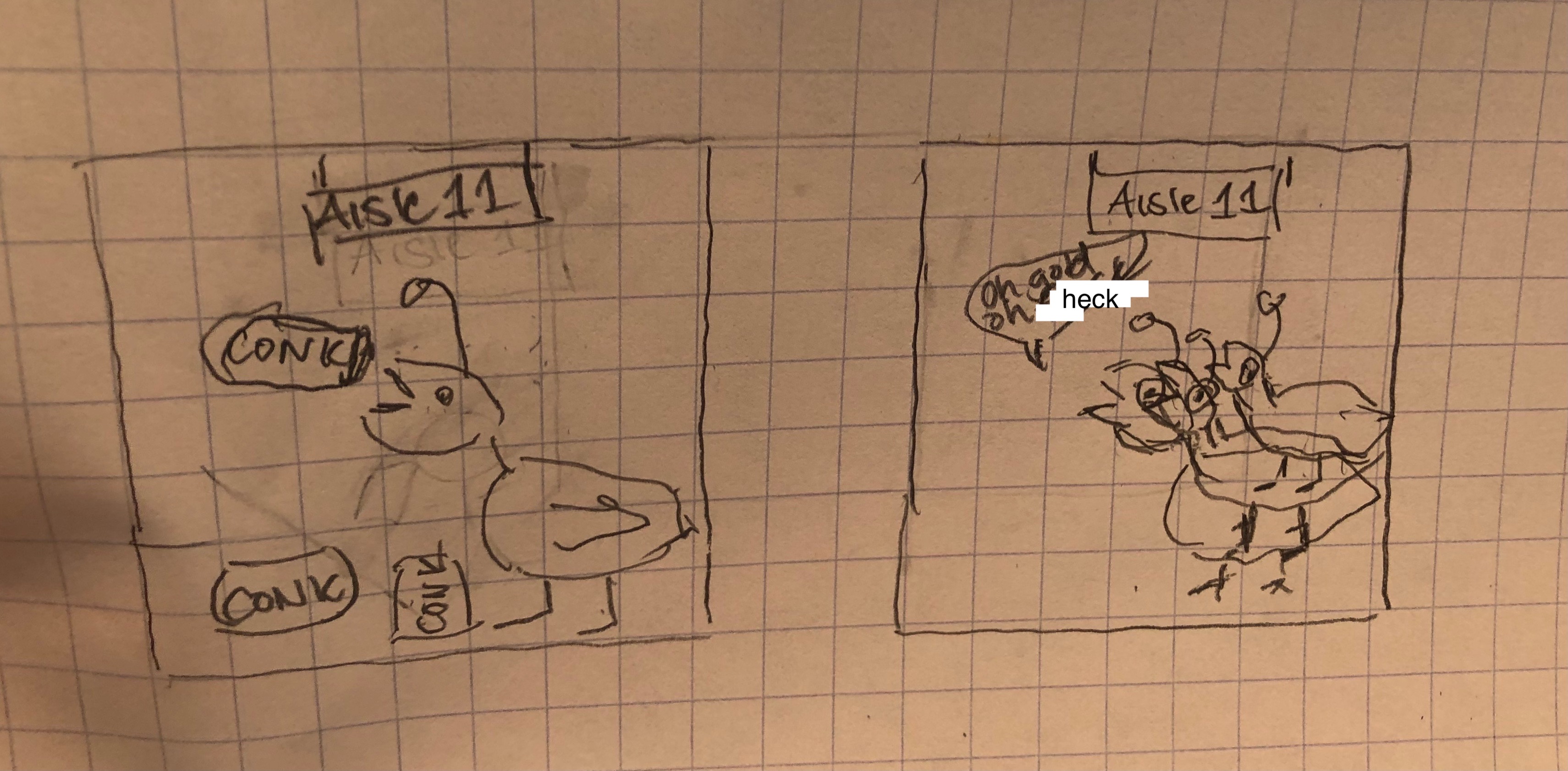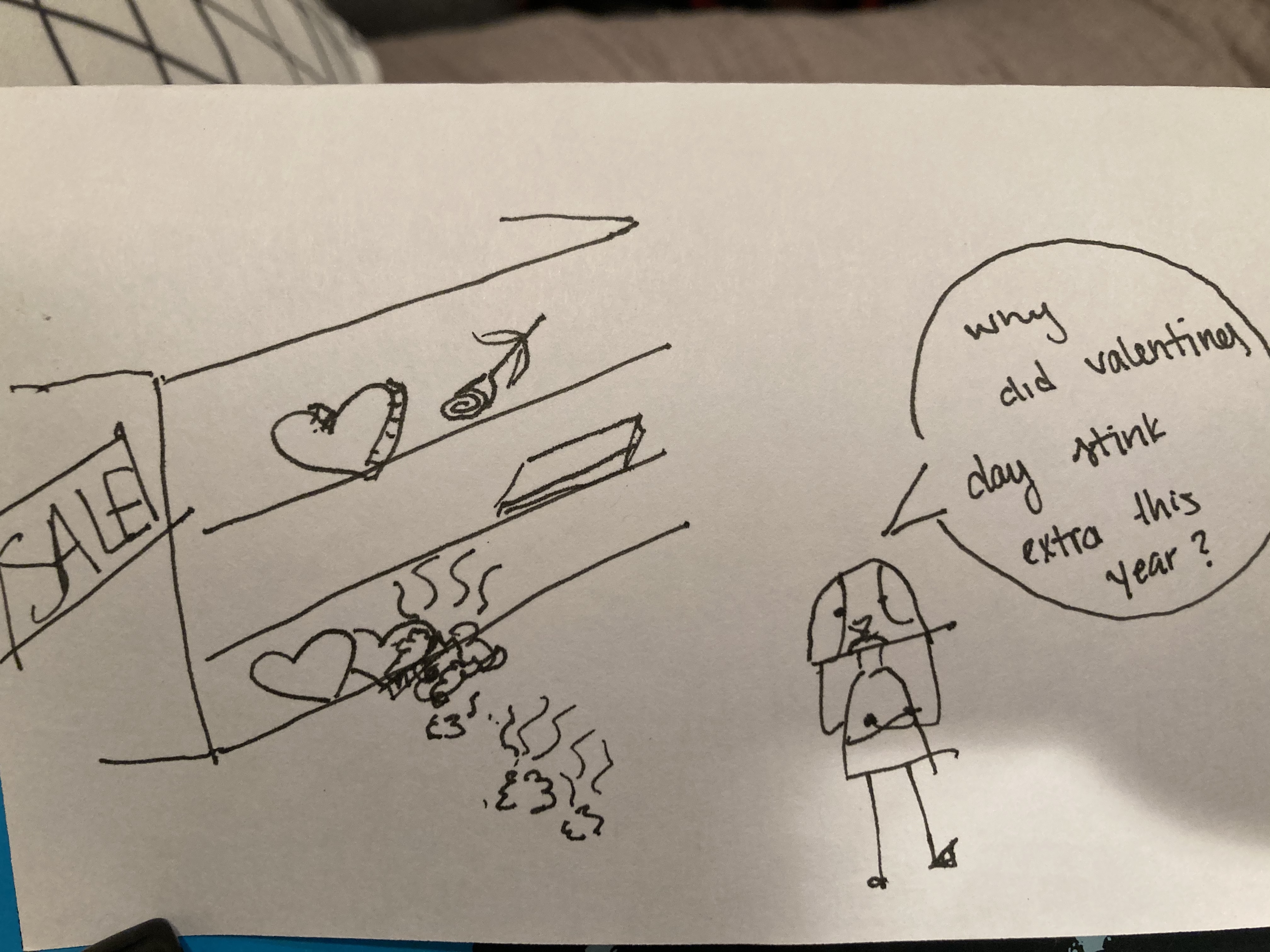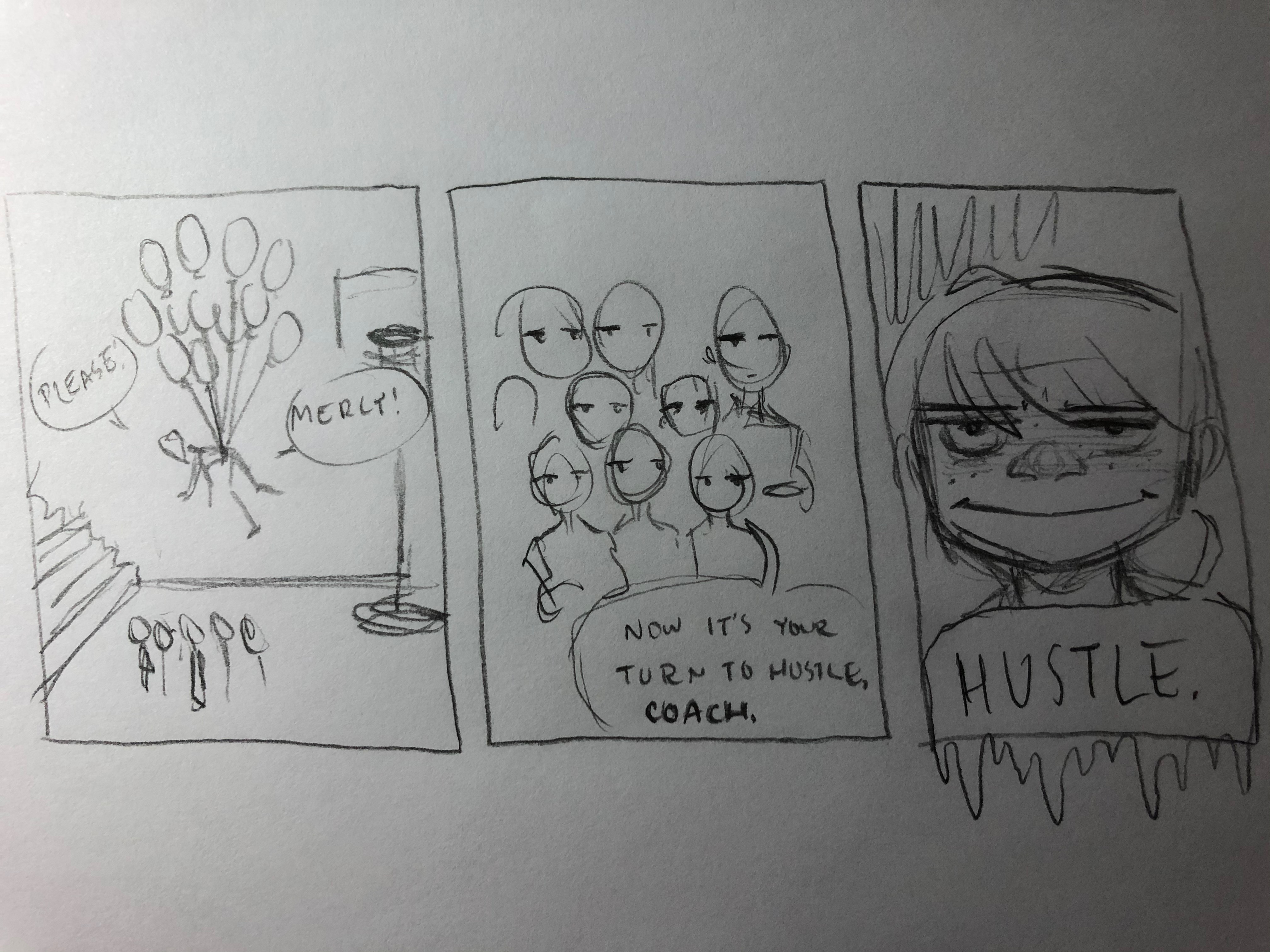Comic Comet!
About
Some of my favorite games, especially to play with friends, are those
that invite creativity in the way of spontaneous gags--games much less
about victory (though still about victory, no mistake) than laughter.
I also enjoy doodling. Combining these elements, I created Comic Comet!
Comic Comet takes some inspiration from the Jackbox game Quiplash, but
is otherwise an original game using original cards. There are two types
of cards, subject cards and situation cards (explained later), and so
far there exist twenty of each type, for a total of forty.
Unlike many other games such as Quiplash, Comic Comet relies not only
on words but on drawing. I worried that I would not be able to maintain
that same fast-paced rush while also having to account for the extra
time needed for constructing a joke, planning the panel(s), and
drawing it out, even for relatively rougher unpolished sketch comics.
Despite my initial concerns, I think the end result achieved the effect
I wanted and ended up as a really fun game!
The Art
I created six characters to feature in this game as sort of backups
for players to use. Because of the time limit, if the player wanted to
draw someone other than a stick figure but didn't have the time to
come up with something else immediately, these characters would be
available.
In terms of their design, I tried to make the characters both appealing
and easy to draw recognizably. Therefore, I made them anthropomorphic
animals whose limbs and necks are lines, and whose heads and torsos
are heavily shape-based. Their clothing accessories can be omitted; I
included those in large part to also incorporate a theme color for
each of them.
Below are the front and back of examples of a subject card (left) and
a situation card (right). They are color-coded for easy differentiation.
Unfortunately, I didn't have the opportunity to print them out.
On the front of both cards, the most important element is the text,
giving the subject and situation respectively for each prompt. To add
to this aesthetically, I kept with the "comet" theme, and drew a comet
soaring across both cards when put together in order. The backdrop
color on each matches the color of the back.
The back of each card hints at the purpose of each. The subject
card focuses on the characters in framing, as well as color--the
backdrop is gray, with the characters colored in. The situation card
zooms out to show the spaceship the characters are in (also in line
with the "comet" theme, albeit more loosely relating to outer space);
here, the ship is in gray and the rest of the card is in color, to
figuratively highlight the characters' circumstances. Put together, the
cards form a two-panel comic themselves.
Rules
Setup
- Decks
- The first deck is for subjects: characters, central objects, etc.
- The second deck is for situations: locations, circumstances, etc.
- Prompts
-
Each prompt is a pair of cards, made up of one subject card and one
situation card.
- Best played with at least four players
-
Suggestion: to easily assign players randomly to prompts, designate
each player a number, and use a random number generator.
Rounds
-
Draw half as many prompts as there are players (if an odd number of
players, round down), and lay them face down in a sequence.
-
Randomly assign two players to each prompt (if an odd number of
players, let there be one group of three)
-
Give players 5 minutes to draw comics based on their prompts--up to 3
panels per comic.
-
When time is up, all players lay their comics face down next to their
prompts.
-
Display each prompt's corresponding comics one at a time for all
players to vote, without revealing who created which comic until
voting for that prompt is complete.
-
For each prompt, the winner gets six points. If tied, points are
split evenly among tied players.
-
Players can determine how many rounds to conduct. The player with the
most points at the end wins.
Playtesting
Testing of the game was complicated by the fact that it had to be
conducted virtually. First, we could not all use one physical set of
cards. Second, if each person displayed their comic through screenshare,
the creators would not be anonymous. I overcame these hurdles by
abstaining from playing myself, acting as an administrator.
The "cards" I used in these playthroughs were a combination of a
spreadsheet and two online number spinners. In a Google spreadsheet, I
had a numbered list of all the cards for each of the two decks. Each
spinner started with the same numbers from 1-20, but every time I spun
to "draw" a card, I disabled the number it landed on so that the same
card would not be drawn twice. Once I drew the appropriate number of
topics, I used a random number generator to assign players. Then I
direct messaged each player their prompt individually before starting
the timer.
After each round, I had all players send me an image of their comic
and screenshared from my own computer. In fact, I was able to easily
group the comics by prompt this way. The hardest part was that it took
time to go through this process, but the time was also filled up with
conversation. Figuring out how to admin also took more time at first,
but in later rounds it became smoother.
Below are some of the comics made during gameplay, with prompts.

Subject: The Gingerbread Man // Situation: Snail race

Subject: Caffiene // Situation: CVS aisle at 9 PM

Subject: Unidentifiable moldy object // Situation: Candy section of
Target right after Valentine's Day

Subject: A guy who got tied to a bundle of balloons and is floating
away // Situation: Middle school gymnasium
This game had five players and five rounds. By the end, most of them
were tied, but there was not much focus on the total number of points.
At most, the winner for each prompt would celebrate a bit at each
round, but most of the attention was on enjoying the comics themselves.
I personally was also happy that players wanted to use the characters
I designed in their comics.
Only slight modifications were made. In the first version of the game,
I gave three minutes for each round, as I tried to find a balance
between accommodating the drawing and keeping the game exciting.
Immediately it was decided that this was too little time, and the
limit was expanded to five minutes. This change did no detriment to
the energy of the game, made it a bit less stressful, and evidently
improved the quality of the comics. A one-minute warning was also
found to be helpful.
Summary
The most nervewracking moments in this process were the ones right
before and right as I was first figuring out in real time how to
facilitate the gameplay with my friends. After experiencing that initial
anxiety, though, I was surprised at how little I changed about the
structure. Part may have been planning ahead, and part was probably
the flexibility of the game and of my friends. In any case, after
(and even during) a few initial bumps, we had a lot of fun and
laughter.
I appreciate the variety allowed by the combination of cards, making
the game repeatedly replayable. It could be interesting to explore
different versions of the game based on these cards as well. Players
could instead draw two subjects for each situation, for example, or
the cards could be used as an exercise against art block without even
playing the game; the decks leave wide open a number of possibilities.
With just the standard version, there are already 400 distinct possible
prompts. The number of possible comics is much larger, however, because
that derives from the unique lens of each player. Comic Comet is a game
I'd like to play again and again.




